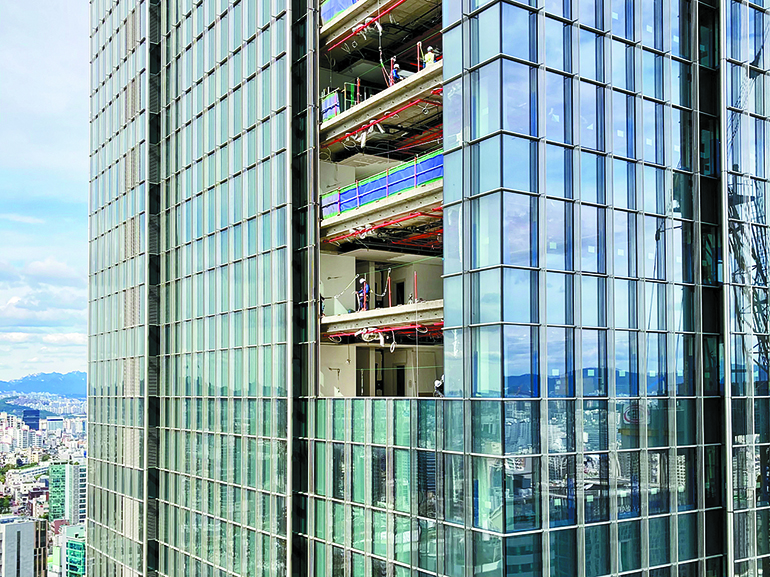
Latest News
- Hyundai E&C Shifts into High Gear to Enter Nordic Large-Scale Nuclear Market
- Hyundai E&C Strengthens Korea-Japan Cooperation in Energy Transition and New Growth Businesses
- Hyundai E&C Signals Green Light for Large-Scale Nuclear Power Plant Business in Europe
- Hyundai E&C Unveils Energy-driven Growth Strategy “H-Road”
- Hyundai E&C to Build First Unit of SMR-300, a Model for U.S.-Korea Energy Cooperation
[Our Project] New skyscraper in Gangnam area under construction

The Teheran-ro 237 development project conducted by Hyundai E&C is a mega-sized complex development project
which is expected to lead a global industrial trend in Korea. The project includes the construction of a park and two buildings of seven basement levels and 35 and 36 floors above ground on the floor area of 239,105 square meters.
The new landmark will provide offices, hotels, and various commercial and cultural facilities. Currently, the construction site is putting its all-out efforts to wrap up the main construction and execute the landscaping work in a bid to successfully complete the project in January 2021. The construction commenced in December 2016.
For the construction site to secure safety and quality, an innovative alternative was needed. After repeated trials and discussions among the construction site, the relevant business division and the R&D Center, they decided to apply the support method where they conduct the demolition work and the top-down construction method at the same time. In the support method, the existing underground facilities are used as supports to temporarily install jack supports and beam supports and then construct slabs.

The Teheran-ro 237 development project is the country’s first construction project in that the support method is applies to such large-scale construction site. As extremely precise structure and compressive stress calculation are needed, and loads should be measured in real time, the construction site had to remain vigilant all the time to address a wide range of issues to be considered.
What is more special about the project lies in the application of two different structures: Steel reinforced concrete structures were adopted for lower floors, and post-tensioned reinforced concrete structures for higher floors. This construction method drew more attention due to not only the combination of the two structures but also the fact that there are only a few construction projects where post-tensioned concrete structures are applied to almost all slabs.
In an effort to protect passengers from possible dangers, the construction site built an outside safety passage after being granted the permission to occupy and use a road. This construction process was neither recommended nor compulsory. Instead, they took the proactive measure to secure safety, which enabled them to gain strong confidence from relevant public agencies.
Moreover, the construction site has strove to offer education programs aimed to improve mental and physical health of their workers and put an emphasis on the prevention of cardiovascular diseases. As a result, the construction site was selected as the “excellent workplace promoting workers’ health” by Korea Occupational Safety & Health Agency(KOSHA).

